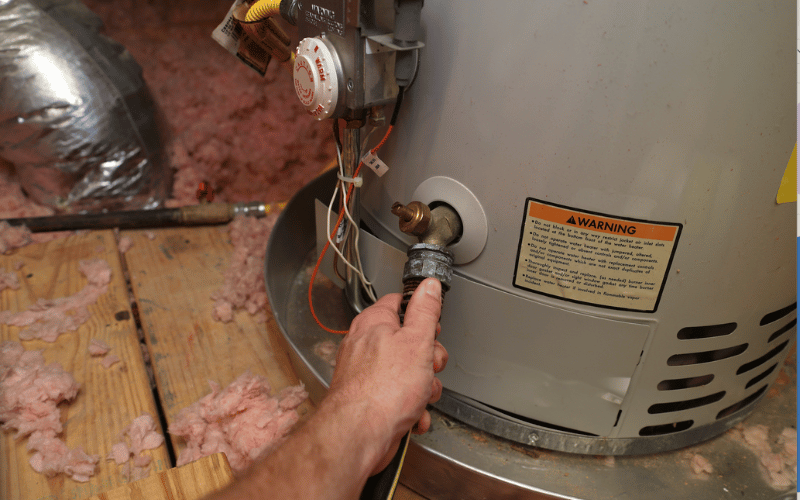Ways to Maintain Your Home's Hot Water System Functioning WellHow to Properly Maintain Your Home's Hot Water System
Ways to Maintain Your Home's Hot Water System Functioning WellHow to Properly Maintain Your Home's Hot Water System
Blog Article
Presented here further down you'll find lots of quality tips in regards to What Kind of Maintenance Do Water Heaters Need?.

Warm water is essential for daily comfort, whether it's for a revitalizing shower or cleaning meals. To guarantee your warm water system runs effectively and lasts much longer, routine maintenance is crucial. This article provides useful pointers and insights on how to maintain your home's hot water system to prevent interruptions and pricey fixings.
Introduction
Keeping your home's warm water system could appear daunting, but with a few easy steps, you can ensure it operates smoothly for many years to find. This overview covers every little thing from comprehending your warm water system to do it yourself upkeep ideas and understanding when to hire expert assistance.
Significance of Preserving Your Hot Water System
Regular maintenance not just expands the life-span of your warm water system yet likewise guarantees it operates effectively. Overlooking maintenance can lead to lowered performance, greater energy bills, and even premature failing of the system.
Signs Your Warm Water System Demands Upkeep
Knowing when your hot water system requires interest can avoid significant concerns. Keep an eye out for indications such as inconsistent water temperature, weird sounds from the heating unit, or rusty water.
Recognizing Your Hot Water System
Before diving right into upkeep jobs, it's valuable to comprehend the basic components of your warm water system. Normally, this includes the hot water heater itself, pipes, anode poles, and temperature controls.
Monthly Maintenance Tasks
Regular regular monthly checks can assist catch small concerns before they rise.
Flushing the Hot Water Heater
Flushing your hot water heater eliminates debris buildup, boosting efficiency and lengthening its life.
Monitoring and Replacing Anode Rods
Anode poles avoid deterioration inside the storage tank. Inspecting and changing them when worn out is important.
Inspecting and Changing Temperature Level Settings
Changing the temperature level settings makes certain optimum efficiency and safety.
Do It Yourself Tips for Maintenance
You can execute a number of maintenance jobs yourself to maintain your warm water system in top problem.
Looking for Leakages
Routinely evaluate pipes and links for leaks, as these can result in water damages and higher costs.
Evaluating Stress Relief Valves
Checking the pressure relief valve guarantees it works appropriately and avoids too much pressure build-up.
Insulating Pipelines
Insulating hot water pipelines decreases warmth loss and can save power.
When to Call a Professional
While DIY upkeep is advantageous, some issues require expert competence.
Facility Issues Needing Expert Aid
Examples include major leakages, electrical issues, or if your hot water heater is consistently underperforming.
Routine Expert Maintenance Perks
Professional maintenance can consist of extensive assessments, tune-ups, and making sure conformity with safety standards.
Final thought
Normal upkeep of your home's hot water system is vital for efficiency, durability, and expense financial savings. By following these ideas and knowing when to look for expert aid, you can ensure a reputable supply of warm water without unanticipated disruptions.
Water Heater Maintenance: The Basics
Maintaining your water heater will ensure it operates efficiently and has a longer lifespan. Neglecting regular maintenance can lead to costly repairs and an even bigger chunk of your savings if you have to replace it sooner than necessary. But there’s good news: Most water heater maintenance tasks are relatively simple and easy for homeowners with basic DIY skills.
Flush the Water Heater
Over time, sediment and minerals can build up in the tank, reducing its efficiency and potentially causing damage. To flush the tank, turn off the power or gas supply, attach a hose to the drain valve near the bottom and open the valve to drain the water until it runs clear. Ideally, flush the tank annually.
Replace the Anode Rod
The anode rod is a sacrificial metal rod that helps prevent corrosion inside the tank. Inspect and replace it every three to five years or per the manufacturer's recommendation. To replace the anode rod, turn off the power or gas supply, drain a few gallons of water from the tank, unscrew the old rod and replace it with a new one. If the anode rod is significantly corroded or covered in calcium buildup, it's a sign the water heater may need to be replaced soon.
Tune-Up
A yearly tune-up can help identify potential issues and ensure your water heater operates at peak efficiency. This typically involves checking the thermostat, burner assembly (for gas heaters) and any other components specified by the manufacturer. During a tune-up, the technician may also clean the burner and adjust the pilot light (for gas heaters) or examine the heating elements (for electric heaters).
How to Maintain Your Water Heater
Insulate the tank. Insulating the tank can improve energy efficiency and reduce heat loss, saving you money on energy bills. You can purchase precut insulation blankets designed specifically for water heaters or use standard fiberglass insulation wrapped securely around the tank. Check the temperature. The recommended water temperature for most households is around 120 degrees Fahrenheit (49 degrees Celsius). Higher temperatures can increase energy costs and potentially cause scalding. Use a kitchen thermometer to check the temperature at the faucet nearest the water heater. Monitor water pressure. Excessive water pressure can strain the water heater and cause leaks or even tank failure. Install a pressure-reducing valve if necessary. The ideal water pressure range is between 60 and 70 PSI (pounds per square inch). Test the temperature and pressure (T&P) relief valve. The T&P relief valve is a safety feature that releases pressure if the tank gets too hot or the pressure builds up too high. Test it annually by lifting the lever and allowing a small amount of water to release. Replace the valve if it doesn't release water or reseal properly. Check for leaks. Regularly inspect the tank, pipes and fittings for leaks or corrosion. Deal with issues promptly to prevent further damage. Even a small leak can lead to significant water damage over time. Consider a tankless water heater. If your traditional tank-style water heater is nearing the end of its lifespan ( typically 10 years), consider replacing it with a tankless water heater. These units heat water on demand, reducing standby energy losses and potentially saving you money on your energy bills. Schedule professional maintenance. While homeowners can perform many water heater maintenance tasks, it's still a good idea to schedule professional maintenance every few years. A plumber or HVAC technician can thoroughly inspect the unit, identify potential issues and ensure it operates safely and efficiently. https://www.homeserve.com/en-us/blog/home-improvement/hot-water-heater-maintanence/

Hopefully you enjoyed our topic about How to Maintain a Hot Water Heater in a Few Simple Steps. Many thanks for taking time to read our blog. If you please take the time to distribute this blog posting if you appreciated it. I am grateful for your time. Come back soon.
Go Services Report this page